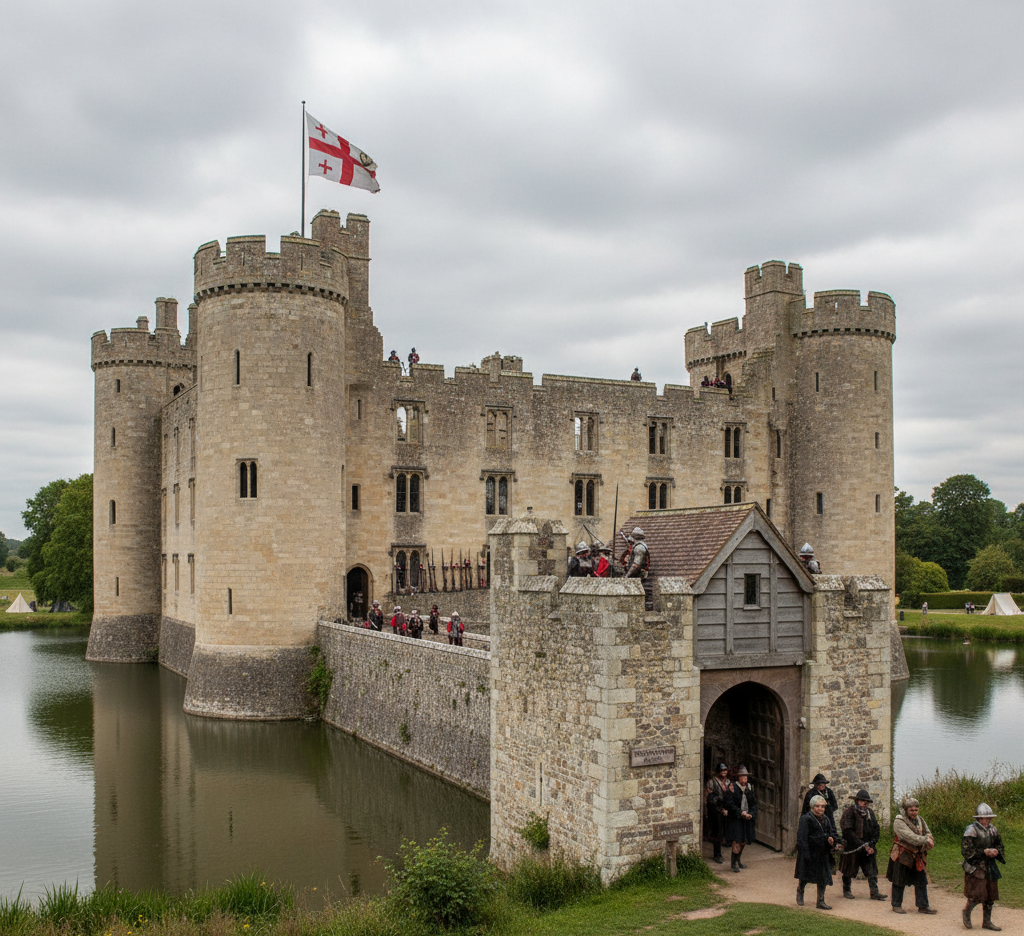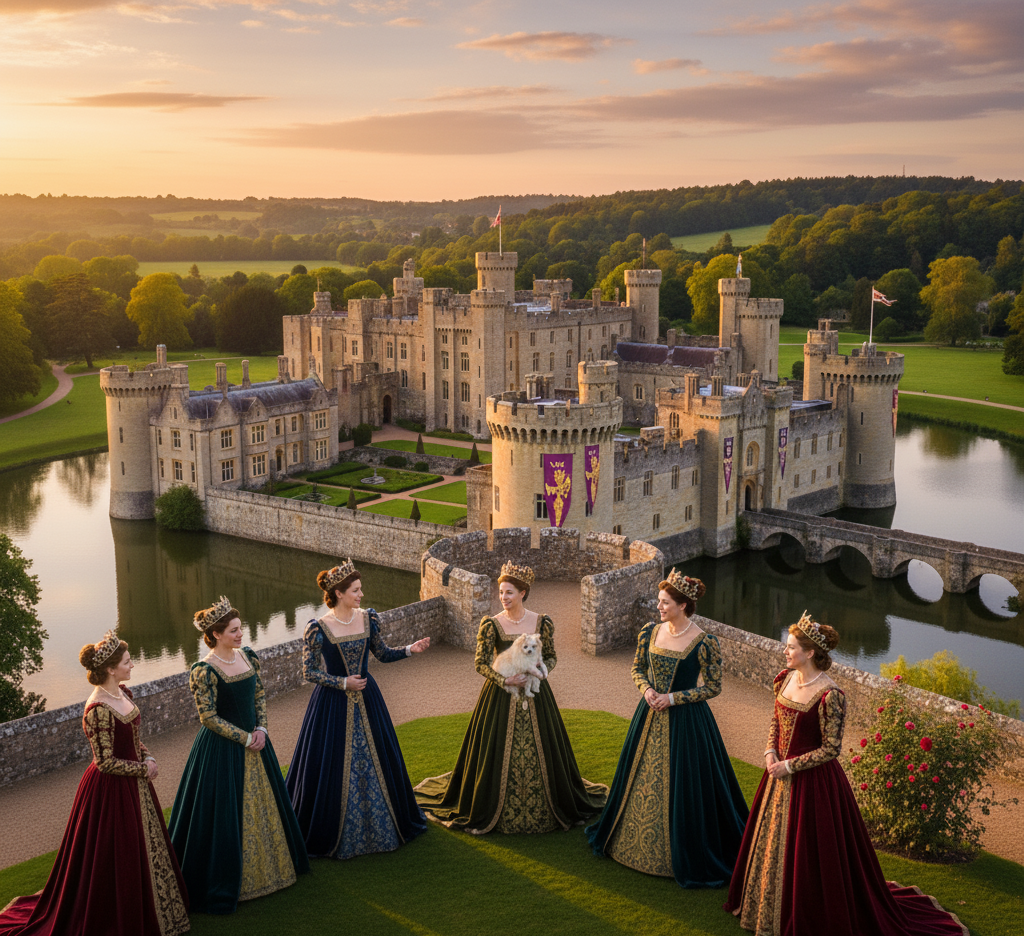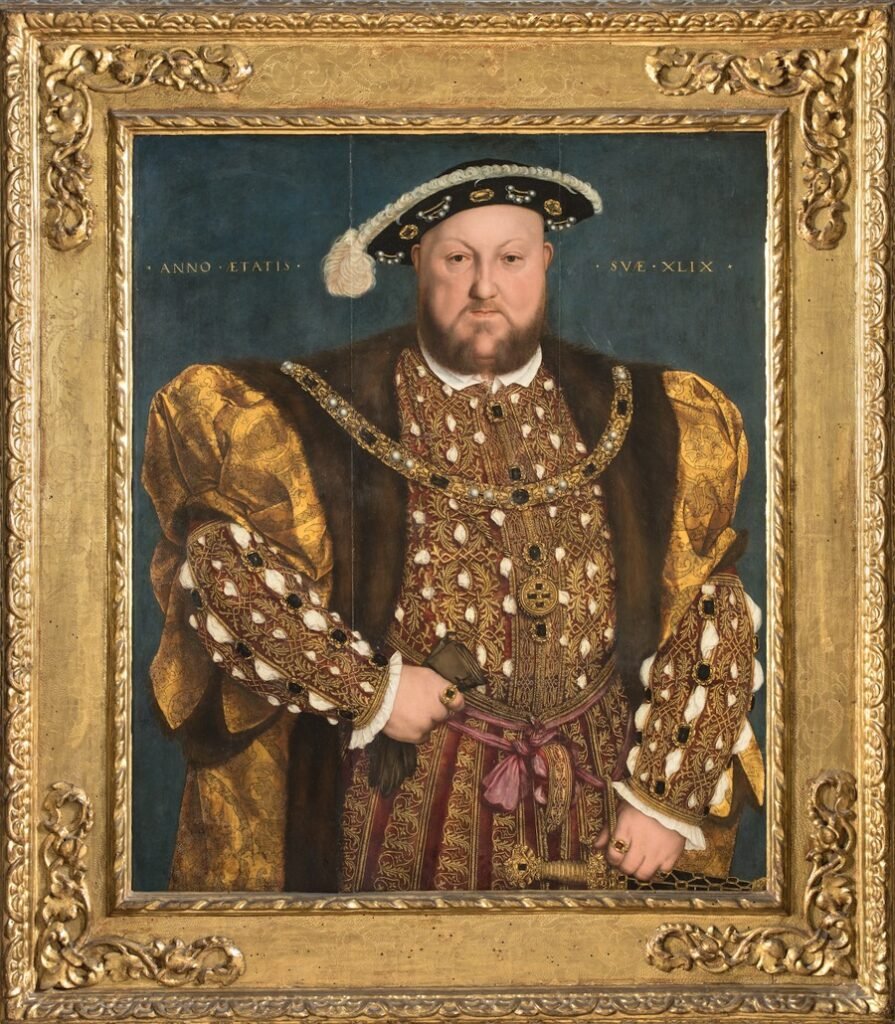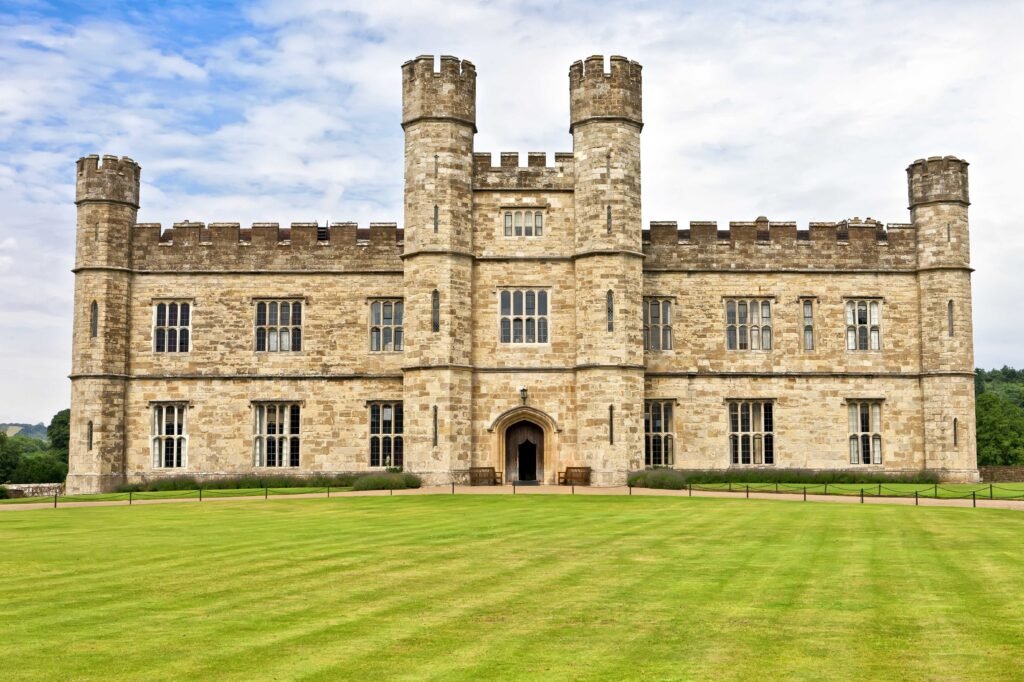Leeds Castle Holds Its Place as the Loveliest Castle in the World
Surrounded by the tranquil expanses of Lenn Valley and gently rising from the center of a freshwater lagoon, Leeds Castle has truly deserved the title ‘the loveliest castle in the world’. Almost 900 years of powerful and beautiful evocative English history has been preserved in the architecture of the castle along with its romance, war, and royalty, and the enchanting stories intertwined through all the history.

5 miles southeast from Maidstone in the English county of Kent, Leeds Castle is located in the Kent countryside on 2 of the islands in the river Len. Originally a Norman stronghold, the castle has been and mirrors the grand transformation of the country as a whole, gone from a royal palace, to a castle country retreat.
From Fortress to Royal Palace
The history of Leeds Castle starts in the year 1119 when Robert de Crevecoeur, a baron of the Normans constructed a first stone fort in the area. The Normans were only a few decades old in England, and they were willing to establish their new kingdom by establishing strongholds throughout the land. The location of Leeds Castle in Kent was of particular importance – this was the entrance to the main road between London and the English Channel, the entrance to Europe.

The first castle was constructed to protect, so the stone walls were thick and the apertures were small. The fact that it was on the islands, which were enclosed with water added an added protection and made it a natural fortress. But it was not only a military station at these primitive times, but it was a home, a seat of Norman power.
A Castle of Queens
It did not take long before Leeds Castle came into the eyes of the kings of England. When King Edward I, commonly known as the English Justinian due to his legal reforms-purchased the castle in 1278, he converted it into a royal palace to house his favourite wife, Queen Eleanor of Castile. Edward continued to add a row of beautiful rooms, fortifications and an impressive edifice called the Gloriette which is located at the center of the castle to this day.

The castle proved to be one of the preferred residences of English queens. It was the possession or rather used by six medieval queens including Eleanor of Castile, Isabella of France and subsequently by Catherine of Aragon, the first wife of King Henry VIII.
Due to this continued connection with the royal women, Leeds Castle was marked as the Ladies Castle. It was also one of the most dramatic royal events in the year 1321 when Edward II ruled. In the year 1279 his queen, Isabella of France, made an attempt to enter Leeds Castle, but was denied by its constable, Bartholomew de Badlesmere.
Enraged, Edward II besieged the castle and took it after a few days. Badlesmere was put to death, and Leeds Castle was once more firmly in the possession of the Crown. It was a reminder that even beautiful places could be the subject of lethal power politics.
Henry VIII and the Tudor Age
The reign of Henry VIII at the beginning of the 16th century marked a new era of Leeds Castle. Henry, in his six marriages and dramatic severing with the Catholic Church was also a great lover of architecture and lavishness. He extravagantly restored Leeds Castle to provide Catherine of Aragon, born in Spain, his first wife, with a home.

The castle was re-decorated in Renaissance style under the orders of Henry, though still powerful and defensible, there was also a stylish and comfortable touch. He turned it into a hunting-ground and royal recreation, and such was the inclination of the rising Tudor to enjoy himself and show off instead of fighting. Leeds Castle in the Tudor period in most ways represented the evolving trend in the English royalty; mighty, sophisticated and more and more domesticated.
Civil War and Private Ownership
The English Civil War (1642-1651) led to the disorder of several historic houses in England and Leeds Castle was not an exception. It was a place of garrison of Parliamentarian forces, loyal to Oliver Cromwell and fighting against King Charles I. The castle had survived the battle pretty much intact, although it had been somewhat damaged, which was a credit to its substantial structure.

The Leeds Castle then fell out of royal possession in the following years to the ownership of individuals. The Culpeper and Fairfax families modified them to suit their own way of life, and the formerly fortified castle was a grand-looking country house.
The nearby parkland was developed in the 18th century and was landscaped in the popular Georgian manner with an accent on beauty, symmetry and harmony. These centuries of individual ownership preserved Leeds Castle but transformed its nature as well. The moat and towers were there still, but within the castle was a refuge of ease and welcome, not of conflict or intrigue.
Lady Baillie and the Glamorous Revival
In 1926, Leeds Castle passed into one of the most colorful periods of its history when it was acquired by Olive, Lady Baillie, the Anglo-American incomparably wealthy heiress. Lady Baillie loved art and design and she used her wealth to restore and convert the castle.
She did the interiors of the honored French designers Armand-Albert Rateau and Stephane Boudin in styles that combined medieval romance with Art Deco elegance. Leeds Castle under her became a rendezvous of the wealthy and the well known.
The Duke of Windsor, Winston Churchill and many Hollywood stars visited in the 1930s. It was a scene of glittering parties, of exquisite taste, and cosmopolitan appeal, a vast contrast to its primitive days as a Norman stronghold

The castle was, however, used more seriously during World War II. It became a hospital and rest-cure centre for soldiers, and was treated and rested in its quiet atmosphere. Lady Baillie remained there until her death in 1974. She set up the foundation of Leeds Castle before her death so that her home of love would not be wasted on and that it would be preserved to the people. It is her foresight that the visitors can still enjoy the castle today.
What You Can Expect If You Visit Leeds Castle Today
The castle was made available to the general public in the year 1976. Millions of visitors have crossed its bridges, visited its rooms, wandered across its gardens, since then. The Leeds Castle Foundation manages its maintenance and restoration, tourism and conservation.

The centuries of history are visualized by visitors – the medieval gatehouse and the apartments of the Gloriette, the decadent drawing rooms of the 20th century. It also has a maze, a grotto, a falconry display, even contemporary events like concerts and historical reenactments. The Leeds Castle has also been featured in the screen in movies such as Kind Hearts and Coronets, (1949) and The Moonraker (1958) which has further made the castle well-known as one of the most scenic spots in England.
Why It’s Called “The Loveliest Castle in the World”
The loveliest castle in the world is a slogan that gained broad use in the first half of the 20th century as visitors and travel writers were impressed by its fairy-tale beauty. As the reflection of this splendid edifice was seen in the undisturbed waters of the moat, and as the towers were outlined against the trees, it appeared the ideal representation of an English dream.

But loveliness has more to do with looks. Leeds Castle is a history of England in the present and a past, time when Norman knights and medieval queens and Tudor kings and modern aristocrats have taken their toll. Every period brought its own element and made a blend of styles and tales that make it really exotic.
The long history of Leeds Castle is a voyage through England. It has been a beacon of beauty, strength, and change, its Norman roots to its royal glory, its civil war suffering, and its 20th-century renaissance.
Today, when visitors walk along its bridges and look into its golden image in the water, they are not only looking at a building, but at nearly nine hundred years of English life. Leeds Castle is the loveliest castle in the world, it always was, and it will be a permanent monument to the history, beauty, and eternal life of the nation.
